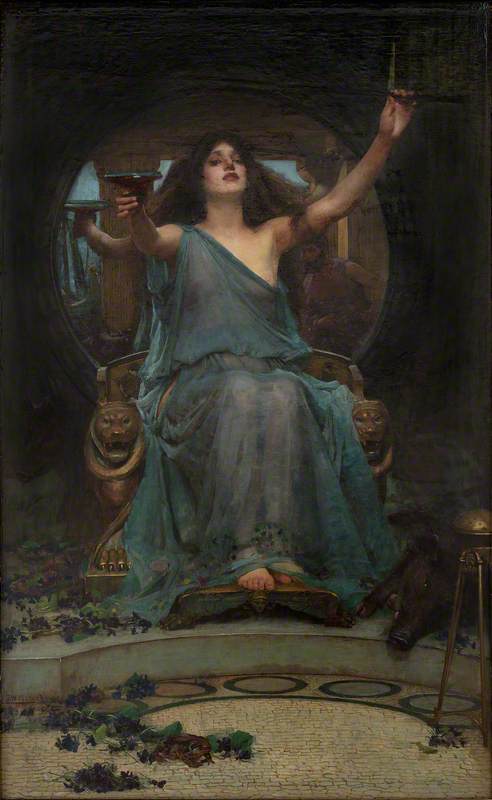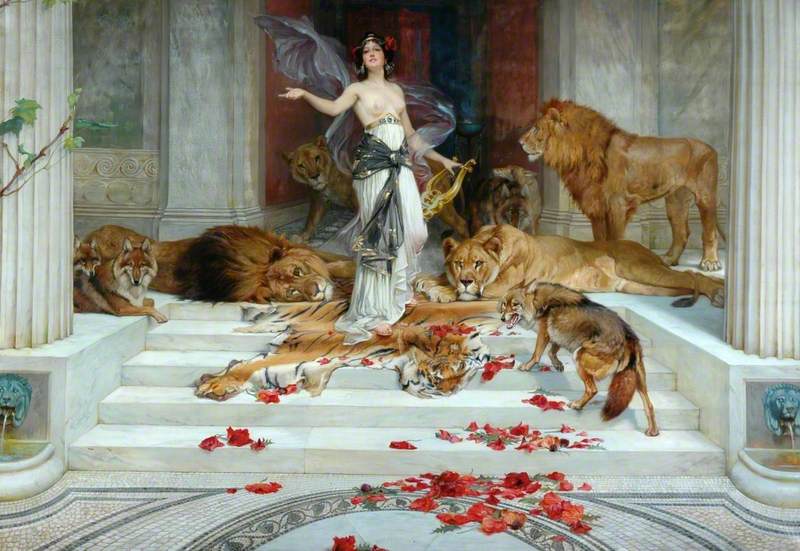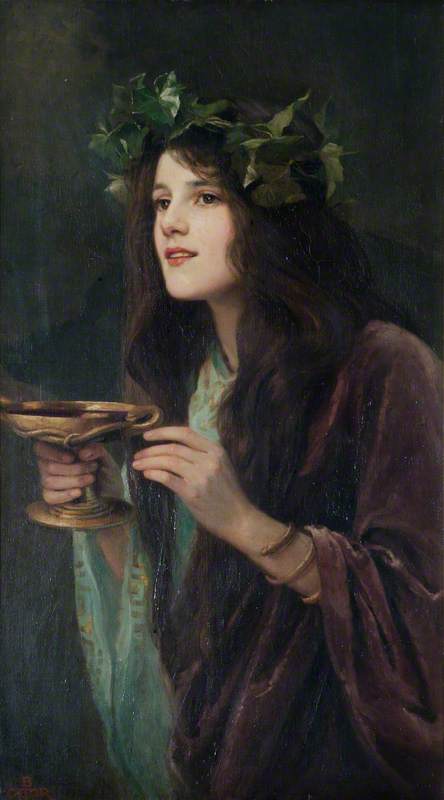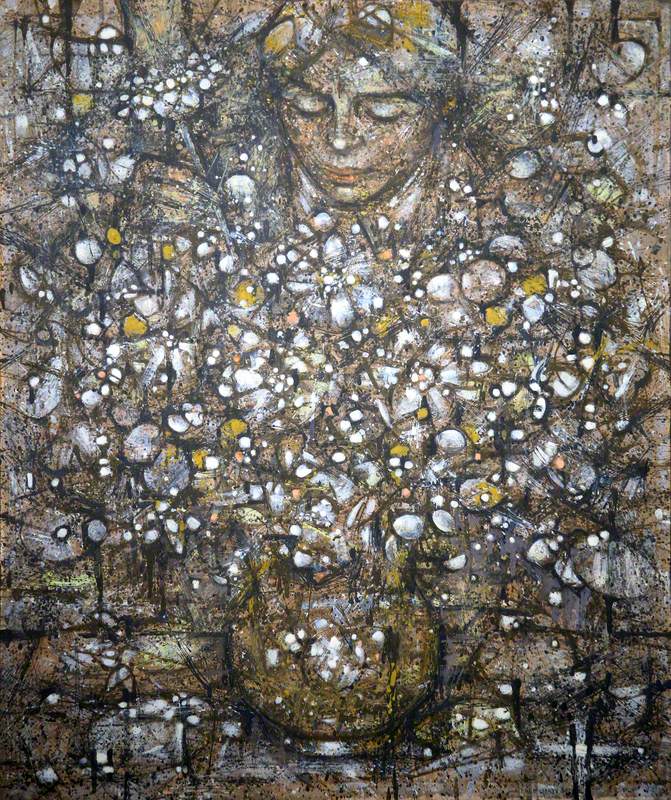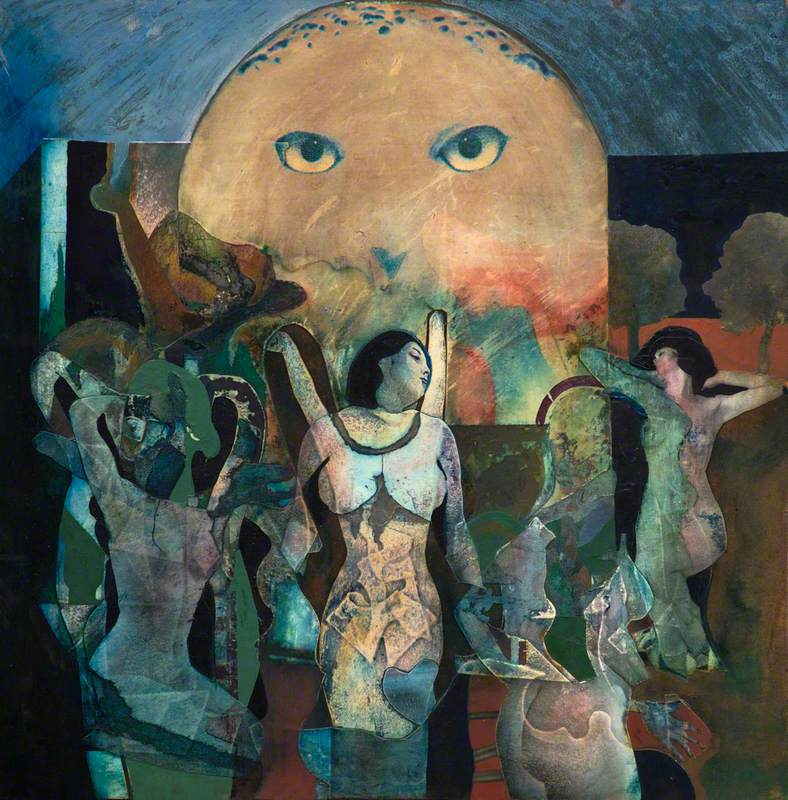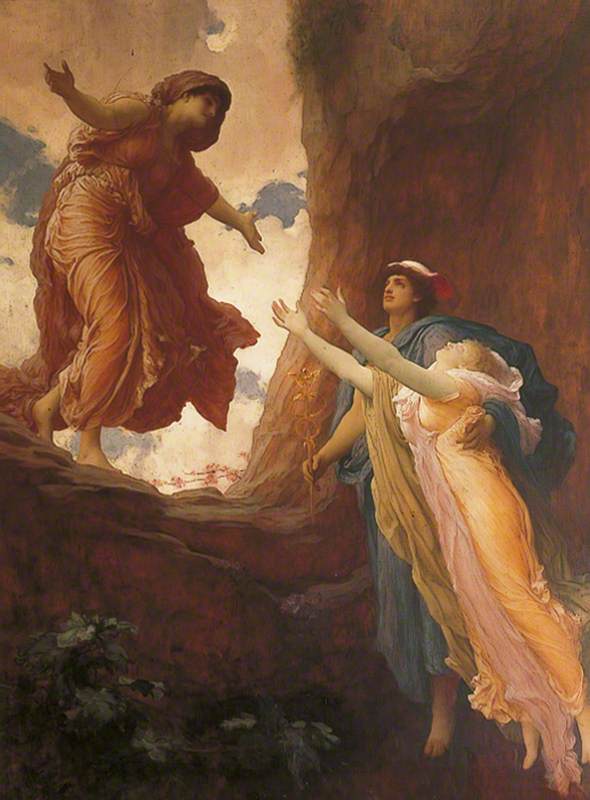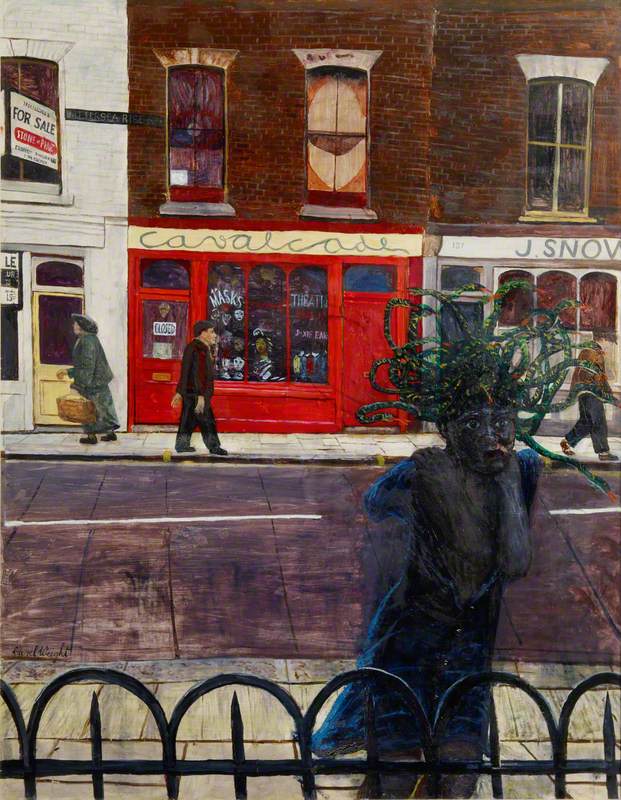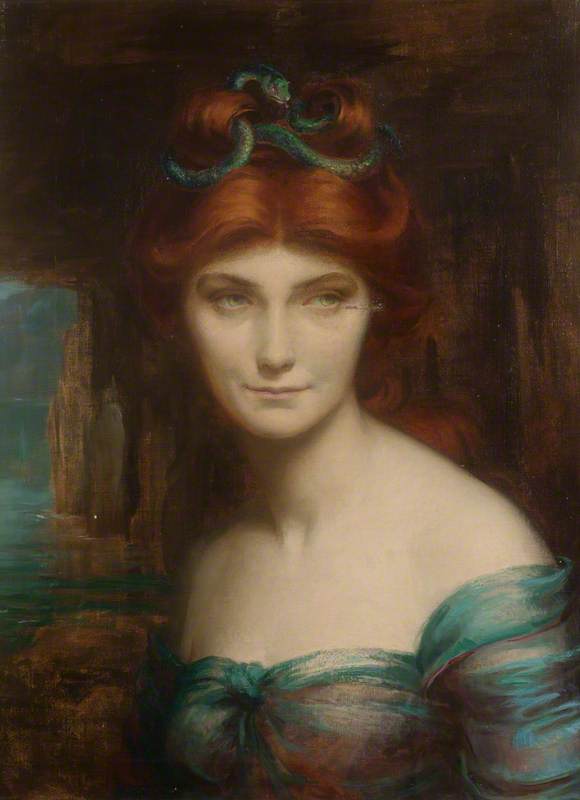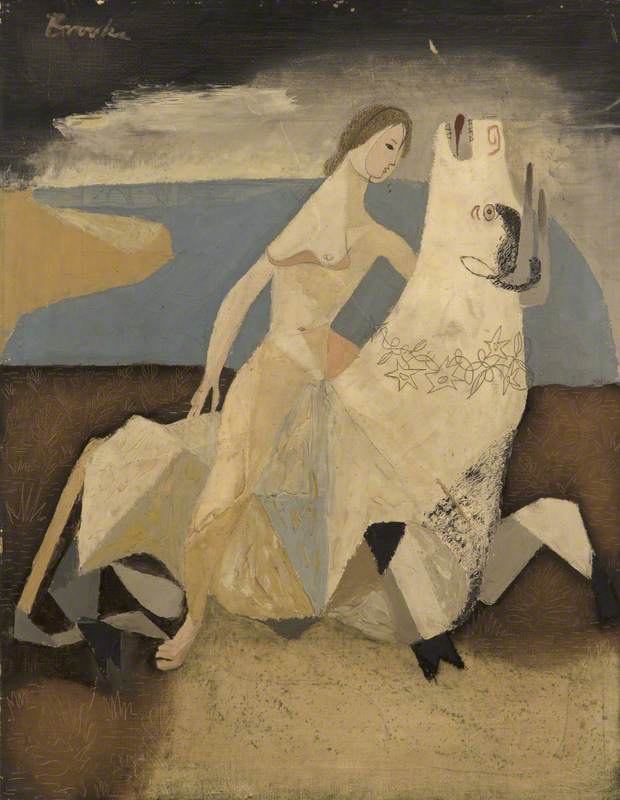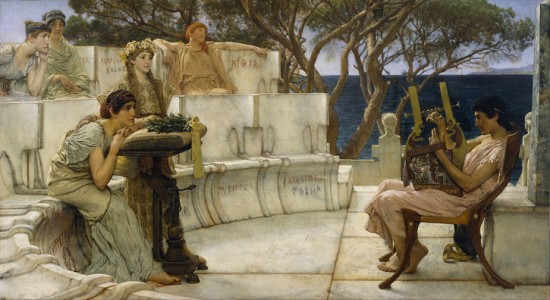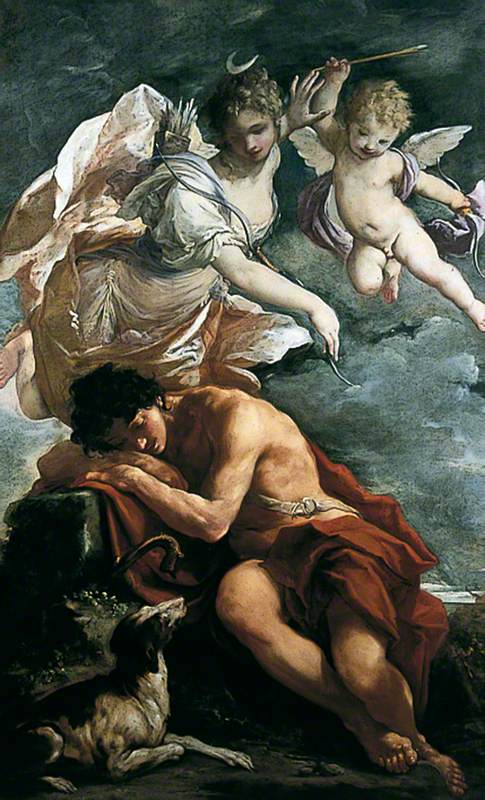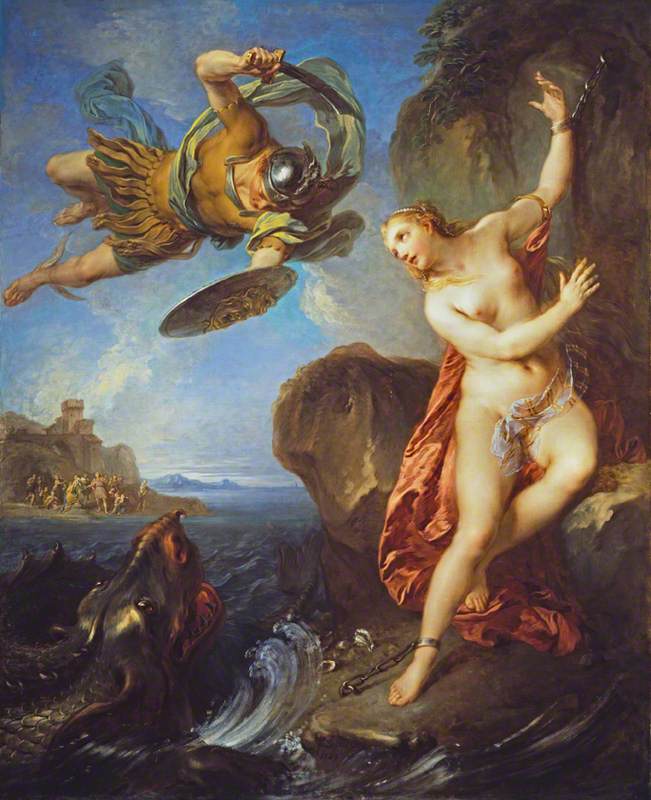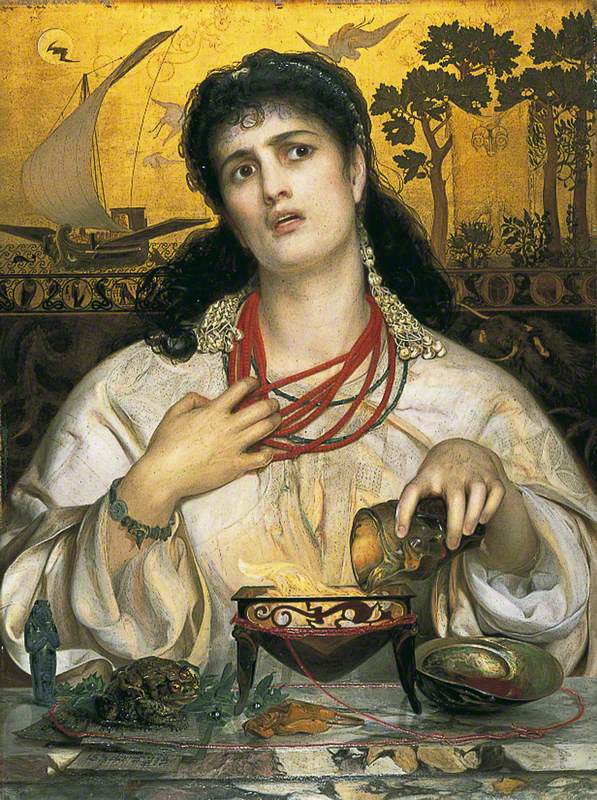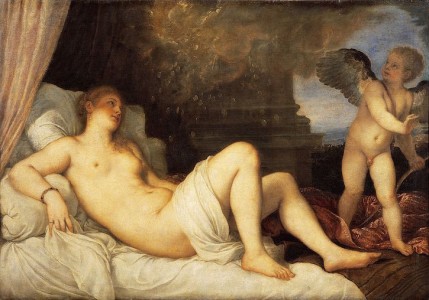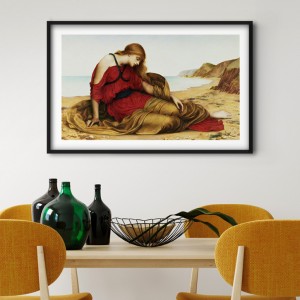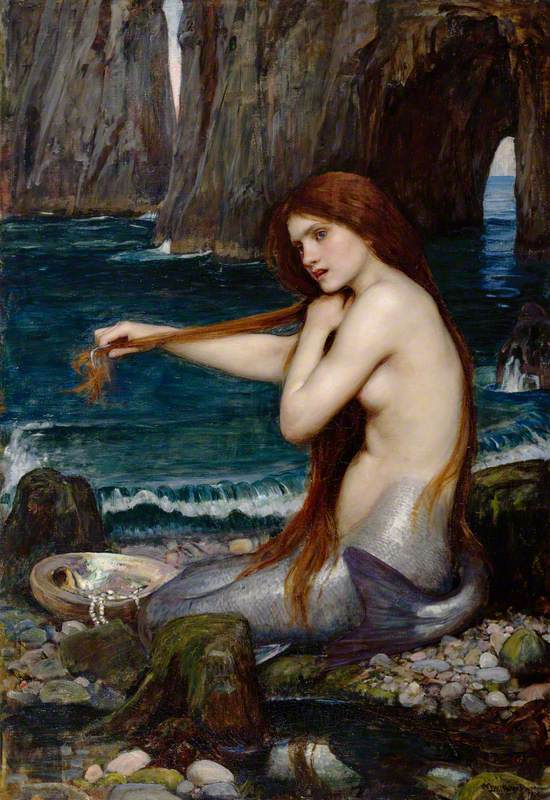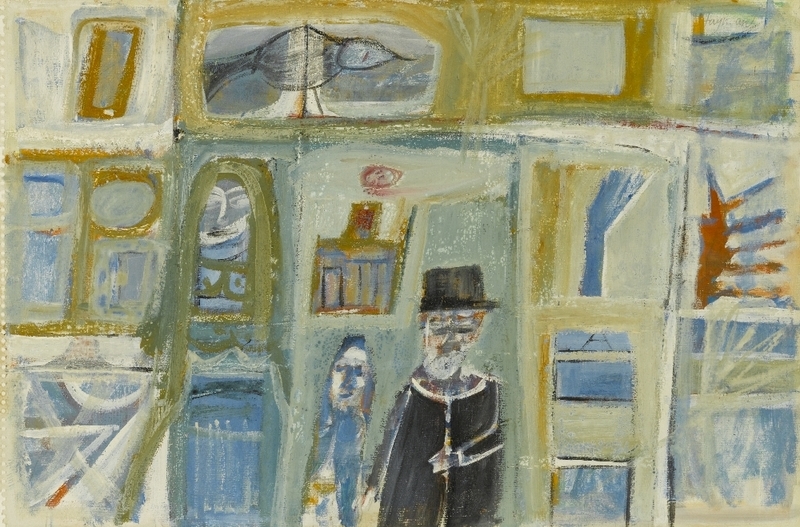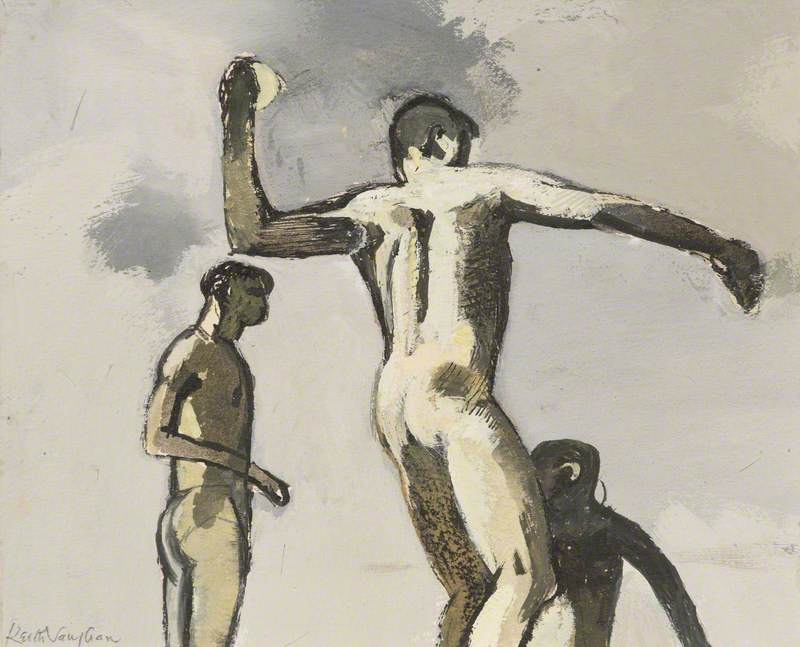Masculine heroes are all very well, but it's the women of mythology who have most bewitched and inspired artists and writers – and there are some beautiful and unusual representations in the UK's collections. The range of interpretations in these artworks, and in the poems I have gathered on mythological subjects, reminds me that each age and every teller will add their own twist to a story. Old as they are, they belong to us all.
John William Waterhouse painted three famous images of Circe, the enchantress who turned Odysseus's men into pigs in one of the best-known stories from Homer's Odyssey. In this powerful painting, her porcine victims loll at the foot of her throne.
Many artists, including Wright Barker in this stately painting, have depicted Circe surrounded by her pet leopards, with the gorgeous cats echoing the witch's own air of beautiful threat.
But looking through the archives at representations of Circe, one face jumped out: the youthful, winsome vision of the witch as imagined by Beatrice Offor. Beatrice Offor endured great tragedies – including the deaths of her husband and their young sons – and she died by suicide. She is best known for her thoughtful and expressive paintings of women, often modelled by her sisters.
Her Circe is young, her face infused with sweetness and mischief rather than danger – and yet the goblet in her hands is surely the charmed draught that will twist Odysseus's men into beasts. This Circe reminds us that Odysseus was a trickster, a ferociously clever man accustomed to outfoxing monsters like the cyclops Polyphemus and bending men to his will, and far from a helpless hero. A girl would need her wits about her when he washed up on her island.
Blodeuwedd was a goddess – formed from flowers of broom, oak and meadowsweet – to be a wife to Lleu in the medieval Welsh stories of the Mabinogion.
Blodeuwedd conspired with her lover to murder Lleu, which was to be no mean feat given that various enchantments meant this could only happen under extremely specific circumstances. Lleu was invincible at day or night, indoors or outdoors, riding or walking, naked or clothed, and when assaulted with any lawfully made weapon. In order to dodge these protections, Blodeuwedd had to contrive to kill him at dusk, tangled in a net, with one foot in a bath and one resting on a goat with a spear that had been forged only during the hours the smith should have been at church. After all this effort, Lleu is rescued and nursed back to health and, as a punishment for her betrayal, Blodeuwedd is transformed into an owl. Her fate overshadows this arresting image by Jeremy Roberts.
'As punishment for shattering his trust,
I'll never more beneath the sun be warmed.
And flowers hide their faces from the dark.'
– from Blodeuwedd by Sarah Ziman
The fate of Persephone, sentenced to spend a cold half of every year in the underworld with Hades, has inspired legions of artists including Dante Gabriel Rossetti who used her Roman name, Prosperine, for his luscious painting featuring Jane Morris. The depictions of her mother Demeter's joy – the joy that brings the world bursting back to green life in spring – are the ones I find most affecting. Frederick Leighton's painting is full of movement: arms are outflung and sumptuous robes are fluttering as mother and daughter are reunited.
The Return of Persephone from Hades
(or 'supported by Mercury and received by Ceres') 1930
James Arthur Woodford (1893–1976) 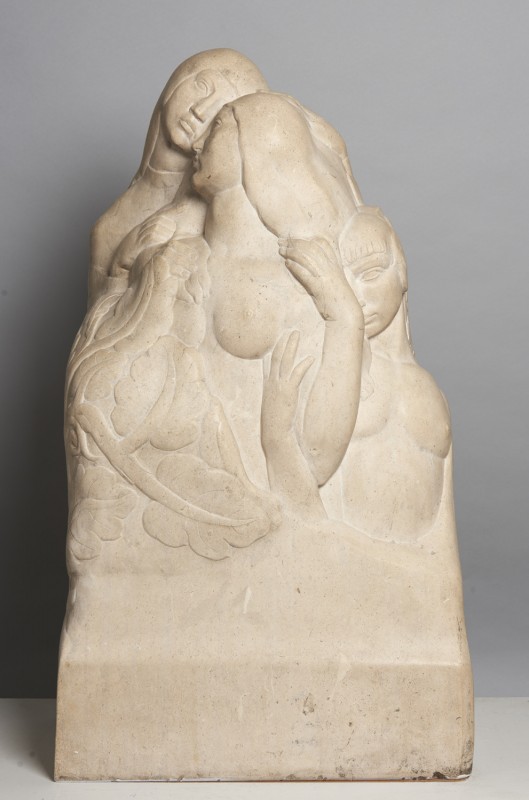
This tender sculpture by James Arthur Woodford shows Persephone turning towards her mother and away from Hades as foliage grows up around them.
Medusa is one of the more well-known mythological women, and in recent times her tale has often been retold to emphasise her victimhood, including by bestselling authors Natalie Haynes and Jessie Burton. She is, after all, punished for the lust of Poseidon who has angered Athena by pursuing Medusa in her temple. I love art that transports these mythic figures – still so familiar to us today – into the modern world, as with Carel Victor Morlais Weight's Battersea Medusa.
'It hangs from the end of my bed
in a Marks and Spencer bag for life.
It hisses in the night.
I've been bitten once or twice.'
– from Medusa's Head by Patrick Widdess
There is a reason these myths have endured through millennia. They are tales full of drama that will continue to be retold. Artists and writers remind us that no story is set in stone, that there is space for play in the margins, and that each of us is free to reimagine mythical heroes – and heroines – for ourselves.
Ana Sampson, author
Gods and Monsters: Mythological Poems is edited by Ana Sampson and illustrated by Chris Riddell
